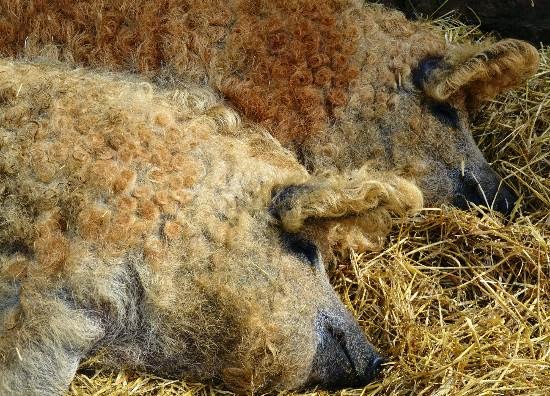 |
| Front view of Mary Arden's Farmhouse |
 |
| Courtyard |
 |
| Living Room |
 |
| backyard |
 |
| The kitchen |
 |
| View of garden |
 |
| Cotswold sheep |
My Visit to Mary Arden’s Farm at Wilmcote
We continued our journey to Wilmcote, eight miles from
Stratford-upon-Avon to see the well-maintained Mary Arden’s Farm House , where
Shakespeare’s mother , Mary Arden, was born and brought up. The original name
of this farm house was “Glebe Farm”. It was a big Tudor type of two-storey mansion surrounded by vast grounds
and woods where one can get an idea about a rich landlord’s way of life of
those times with various activities like breeding different types of animals
and birds, cultivating gardens, milking
cows, threshing corn, making butter and enjoying country sports . Mary
Arden(1540-1608) , the youngest of Robert Arden’s family of eight daughters,
inherited this estate after her father’s death in 1556. She married John
Shakespeare, who was working as a tenant in her father’s land, in 1557. She
belonged to a rich Catholic family of nobles who served the kings like Henry
VII and William, the conqueror.
Whenever the dreaded disease, plague
broke out in Stratford, Shakespeare might have spent some here along with his
mother and other siblings. The beautiful gardens, agricultural activities and
rural sports impressed his mind so much that one can find descriptions of
country sports and pleasures in his plays and poems. Just outside the kitchen
we found ladies attired in Tudor fashion baking bread on mud-built ovens holding
a pair of tongs. A young girl was stacking hay in a wheel barrow to feed horses
in the stable. The Cotswold Sheep are kept in a shed. In Elizabethan age people
consumed sheep milk often than cow’s milk. We also saw a huge cider-press with
an enormous revolving wheel. Two shire horses of gigantic size were led by two
short ladies . A horse carriage was nearby.
As we passed through farm land we saw two huge hairy creatures with
dense curly brown hair resting in the dark hollows below. They are a special
Hungarian breed of pigs called Mangalitza pigs. In those days pigs were in
immense demand and every Englishman kept pigs for consumption We also
witnessed the feats performed by a large white owl which obeyed the commands of
the trainer. Hawking was a popular pastime in Elizabethan times. We saw various
types of birds like hawks, owls, wood peckers, falcons, geese and hooded
vultures. We also saw other special breeds of animals like Baggot goats with
snow-white backs and black front, long horn cattle with bent curved horns,
Tamworth pigs with brown shaggy skin, geese and Gloucester cattle with white
patches on their backs.
The life of a prosperous landlord in 16th
century with age-old customs and practices is brought before our very eyes, and
I could not but feel the impact of this type of life on Shakespeare’s plays
which abound in lyrical descriptions of Nature, country pleasures, queer
beliefs and superstitions and folklore
of those times. The custodians of this building organized nature trails, and
demonstration shows so as to re-create the atmosphere those times and give a
wealth of information about that age. Just beside this farm there was another
farmhouse of Arden’s neighbor, Adam Palmer, called now “Palmer’s Farm”. It was
acquired by Shakespeare Birthplace Trust in 1930. At first the authorities
mistook Adams Farm as the residence of Mary Arden and only in 2000 they were
able to find out the authentic building of Mary Arden. Arden’s Farm was taken
under care by Shakespeare’s Birthplace Trust in 1968 just as an adjoining
building to Arden’s Farm. After 2000 they found out that it was the real
residence of Mary Arden’s family. The rural Farm House with a spacious garden
surrounded by woods and with enclosures for various animals and birds and the
practical demonstration of country customs and various household activities
enlighten and entertain all visitors irrespective of age and temperament.
***************************************************************
25th May, 2014 Somaseshu Gutala







.jpg)












































